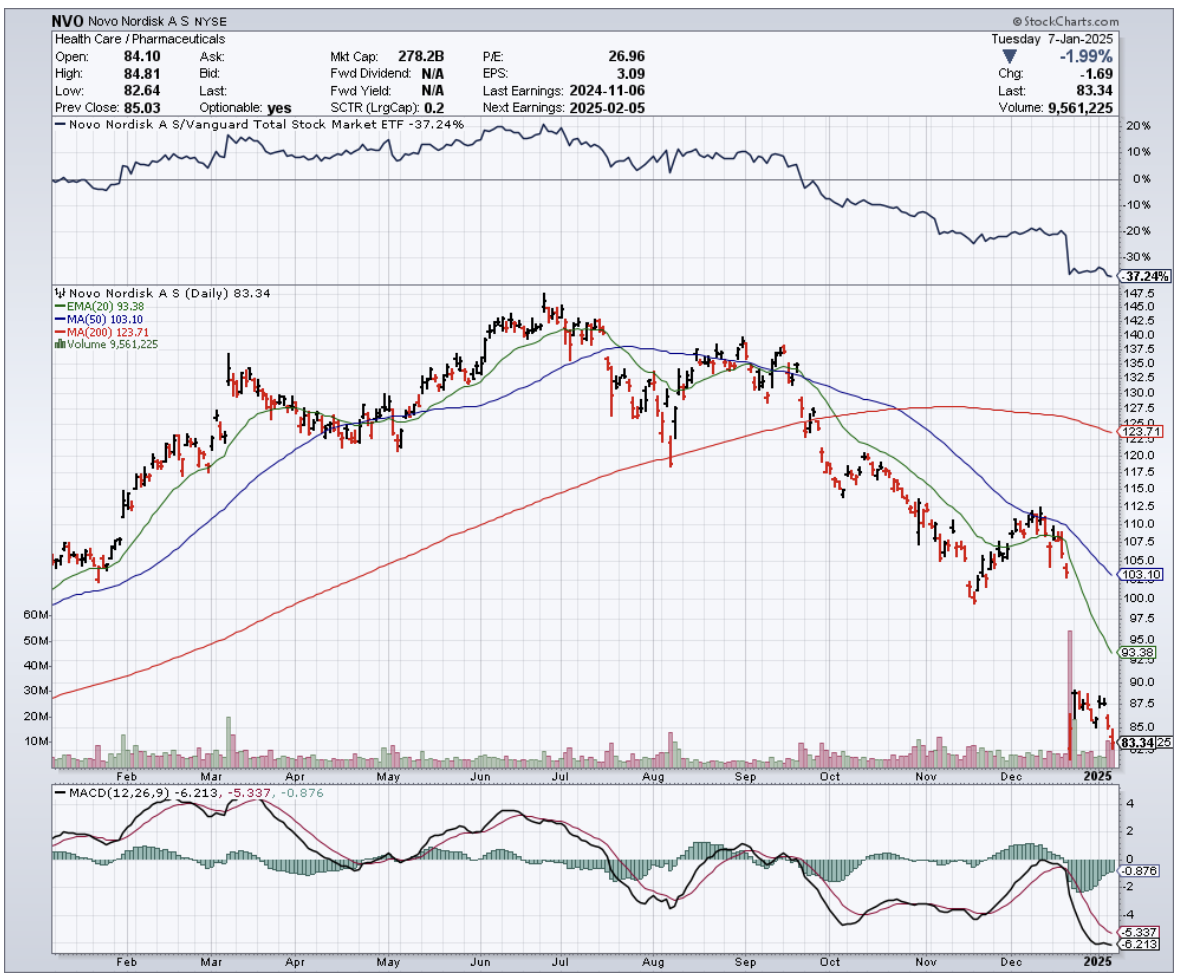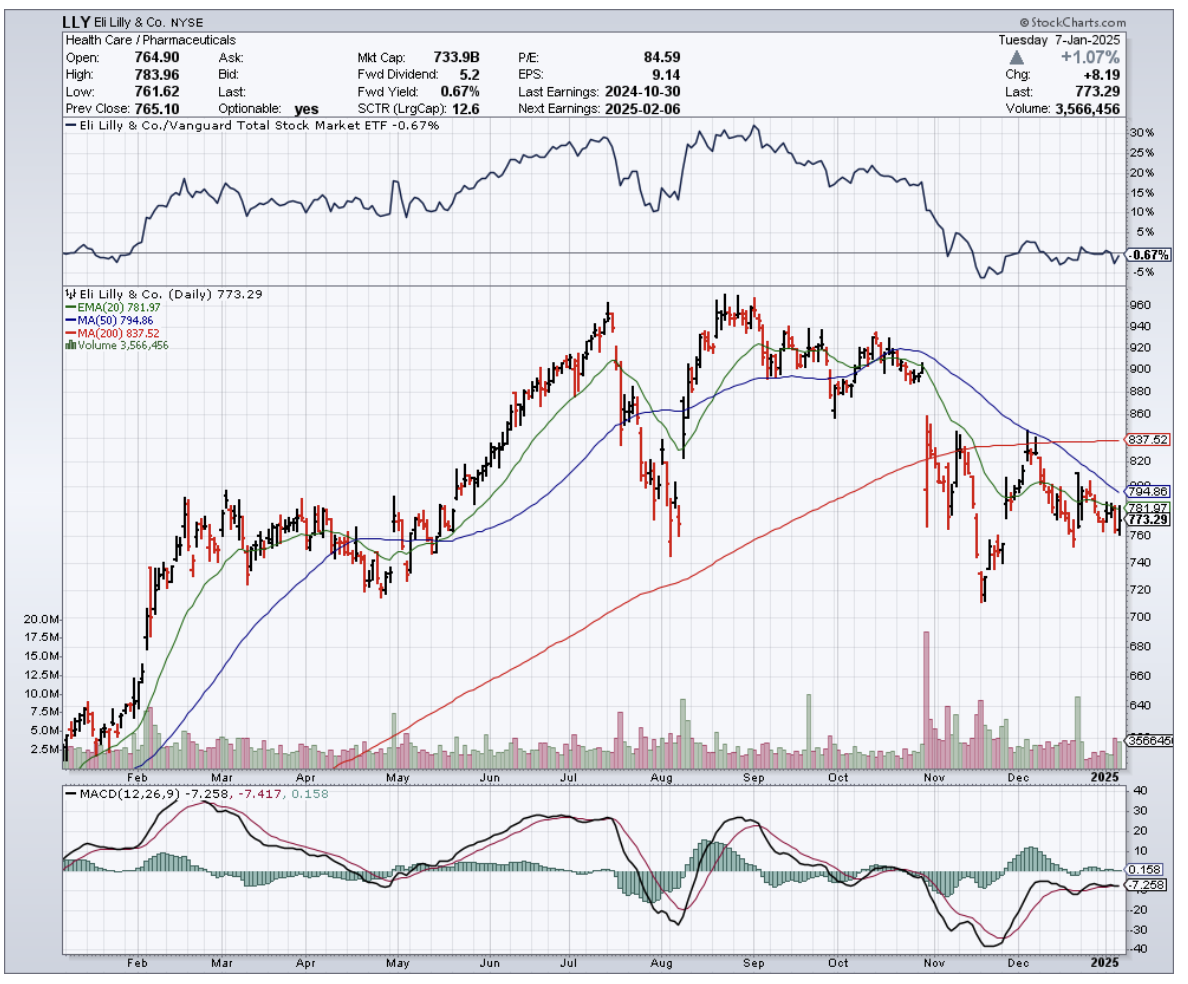During my morning coffee run yesterday, I couldn't help but notice the transformation of my local café's menu. Where once stood a simple array of pastries, now sits a fortress of "keto-friendly" and "low-carb" options.
The barista told me they could barely keep them in stock. Times are changing, but not fast enough to stem the tide of what's become a global health crisis.
Here's a sobering statistic that explains why two pharmaceutical giants are about to have their best decades ever: In 1975, only 3 out of 100 men were obese. By 2022, that number exploded to 14. Women haven't fared much better, jumping from 6.6 to 18.5 out of 100.
But here's the real kicker – childhood obesity has multiplied TENFOLD since 1975.
Enter Novo Nordisk (NVO) and Eli Lilly (LLY), two companies that have discovered what might be the holy grail of modern medicine: drugs that can shrink waistlines almost as effectively as a year of dedicated dieting, but with considerably less willpower required.
I've been tracking both companies closely, and the numbers are staggering. Eli Lilly's tirzepatide (marketed as Mounjaro for diabetes and Zepbound for weight loss) has achieved what most thought impossible – a 20.80% average weight loss over 72 weeks. That's the kind of number that makes both bathroom scales and Wall Street analysts take notice.
Morgan Stanley certainly has. They're projecting the market for these weight-loss wonder drugs to explode from $6 billion in 2023 to an eye-popping $105 billion by 2030. And here's why I think even that might be conservative.
Last week, I caught up with an old friend who heads one of the largest healthcare investment funds in Boston. He shared an interesting insight: "The biggest problem these companies have isn't competition – it's keeping up with demand." Both Novo Nordisk and Eli Lilly are investing billions just to scale up production. It's like trying to drink from a firehose of opportunity.
Let's break down why these stocks are so compelling:
The market for diabetes medications is exploding. We're looking at 537 million adults with diabetes today, growing to 783 million by 2045. These aren't speculative numbers – they're based on current trends that show no signs of reversing.
Novo Nordisk currently dominates the GLP-1 market with a 66.80% share internationally, while Eli Lilly's tirzepatide holds 17.60%.
In the insulin market, Novo Nordisk's supremacy is even more pronounced, controlling 44.50% of the global market share compared to Eli Lilly's estimated 20-25%.
This is where it gets pretty interesting. Despite Novo Nordisk's market dominance, Wall Street has developed a crush on Eli Lilly.
Looking at the Price/CFO ratio, Novo Nordisk is trading BELOW its 10-year average, while Eli Lilly's valuation has soared to levels that would make a tech startup blush.
For 2025, Novo Nordisk's EPS is expected to hit $3.88. With a reasonable PE ratio of 25x, that suggests a fair value of $97.20 by the end of 2025 – an 11% upside potential.
Meanwhile, Eli Lilly, with an expected EPS of $21.57 and a justified PE ratio of 30x, points to a fair value of $647.10, suggesting it might be overvalued by about 17%.
The biggest risk? A global shift toward healthier lifestyles. But having just driven past my local McDonald's with a line wrapped around the building at 10 PM, I'm not losing sleep over that scenario.
My call? I'm long Novo Nordisk. While both companies are excellent, I prefer buying the market leader at a discount rather than the challenger at a premium. It's like buying beachfront property in Miami – the price might seem high today, but just wait until next year.
So, I'm maintaining a core position in Novo Nordisk with plans to add on any significant dips. The obesity epidemic isn't going away anytime soon, and neither is the demand for these medications.
For those looking to play both sides of this market transformation, a smaller position in Eli Lilly isn't crazy – just be prepared for some volatility given the current valuation.
And, yes, I'm aware there’s plenty of hand-wringing over these stocks' valuations. But the next time someone tells you the market's getting too heavy, just remember - in this case, that's exactly the point.



